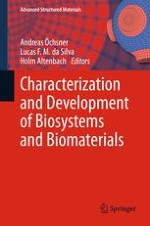2013 | OriginalPaper | Buchkapitel
Innovation Technology to Engineer 3D Living Organs as Intelligent Diagnostic Tools
verfasst von : Hossein Hosseinkhani
Erschienen in: Characterization and Development of Biosystems and Biomaterials
Verlag: Springer Berlin Heidelberg
Aktivieren Sie unsere intelligente Suche, um passende Fachinhalte oder Patente zu finden.
Wählen Sie Textabschnitte aus um mit Künstlicher Intelligenz passenden Patente zu finden. powered by
Markieren Sie Textabschnitte, um KI-gestützt weitere passende Inhalte zu finden. powered by
